Occupational Dermatoses
NOTE: This page is archived for historical purposes and is no longer being maintained or updated.
Slides 26 to 30
Slide 26 - Tumors
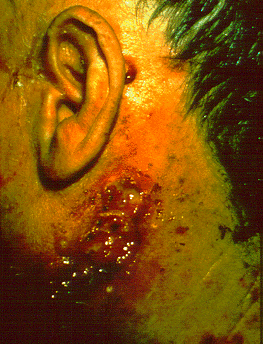
Skin tumors, such as this ulcerating squamous cell carcinoma most frequently arise after years of occupational exposure. Malignant tumors may represent to occupational carcinogens such as coal tar and physical agents such as sunlight. Skin cancer is the commonest form of cancer. The role played by occupational factors is frequently difficult to determine.
Slide 27 - Causes of occupational dermatoses
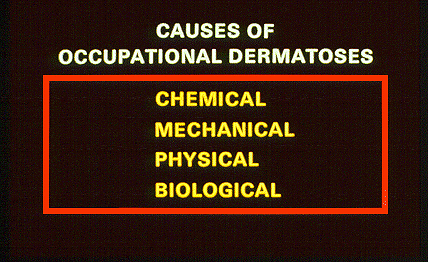
There are four direct causes of occupational dermatoses. In order of their importance and frequency they are: chemical, mechanical, physical and biological.
Slide 28 - Chemical
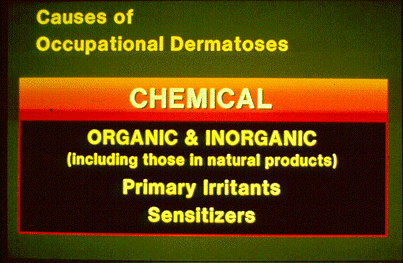
Many new chemicals capable of injuring the skin are introduced each year. Organic and inorganic chemicals encountered in industry, including tose in natural products, constitute a never-ending list of potential hazards. These chemicals may act as primary irritants or as allergic sensitizers.
Slide 29 - Primary skin irritant
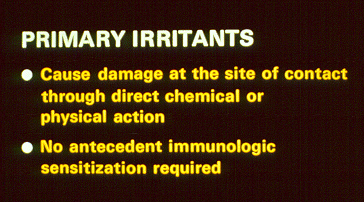
A primary skin irritant is a substance that causes damage at the site of contact because of direct chemical or physical action on the skin. No antecedent immunologic sensitization is required. Some primary skin irritants are also allergens. Only about 20% of all occupational contact dermatitis results form sensitization, while about 80% is attributable to primary irritants.
Slide 30 - Absolute irritants
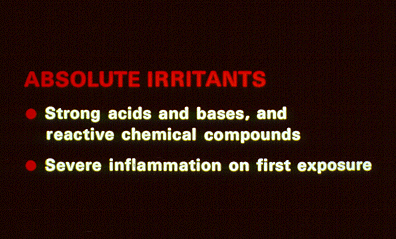
Absolute irritants include an extensive list of strong acids and basis, and reactive chemical compounds. Their potential hazard is usually recognized and skin problems arise most often as accidents or as a result of basic unfamiliarity or ignorance. These agents produce severe inflammation on the first exposure. The response may vary from redness to necrosis.
- Page last reviewed: January 5, 1998 (archived document)
- Content source:
- National Institute for Occupational Safety and Health Health Effects Laboratory Division (HELD)


 ShareCompartir
ShareCompartir